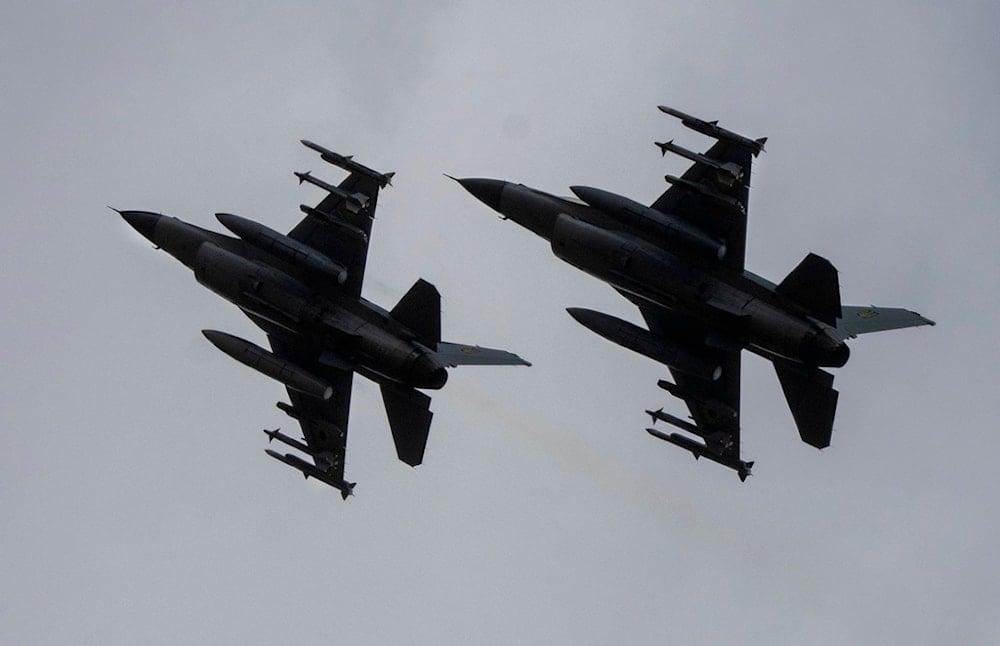US Air Force plans Pacific drills to test potential war with China
The exercises are designed to assess the readiness of US forces for a potential conflict with China.
-

The Ukrainian Air Force's F-16 fighter jets fly in an undisclosed location in Ukraine, on Sunday, Aug. 4, 2024. (AP)
The US Air Force plans to deploy units from across the country to the Pacific next summer for a two-week large-scale exercise, according to Air Force Chief of Staff Gen. David Allvin.
Forces from Alaska, Hawaii, Guam, and the continental US will come together to train in challenging environments and coordinate operations over extended distances, Allvin stated, as reported by Defense One.
"We're calling our summer exercise [20]25 REFORPAC, so going back to the Pacific on a larger scale. We're integrating it into INDOPACOM’s campaign plans and our Pacific Air Forces approach to supporting those, and so we're integrating it into the combatant commander’s piece but we're doing it in a way that's more robust," Allvin said.
According to Defense One, the exercises are designed to assess the readiness of US forces for a potential conflict with China.
These drills will be incorporated into the joint Australian-US exercise, Talisman Sabre, the Air Force Chief noted.
美軍最近官宣了明年夏天的大規模空軍演習REFORPAC。演習著重於如何快速有效的從本土,阿拉斯加和夏威夷向西太平洋戰區迅速集結大規模空中力量和有效形成攻防戰力。看來俄爹是差不多了。該來的總會來。美帝已明牌。平娃要清點一下家底了。 pic.twitter.com/EY9tWtIzpK
— Dr. Bo (@BoDiplo) August 20, 2024
In late April, The New York Times reported, citing unnamed Chinese military strategists, that the US has been actively constructing military bases near China to confine Chinese naval forces within the "first island chain," situated close to mainland Asia, in the event of a regional conflict.
Read more: China blasts US, Japan: Stop inventing imaginary enemies
In a separate report published earlier today, NYT reported that President Joe Biden has endorsed a revised nuclear strategy aimed at addressing what the US perceives as potential coordinated nuclear threats from Russia, China, and DPRK.
Simultaneously, the White House claimed that the strategy, approved earlier this year, is not directed at any single nation or threat.
White House spokesperson Sean Savett stated that while the specific details of the guidance are classified, its existence is public knowledge.
The updated strategy reflects US concerns about what it perceives as China’s rapid expansion of its nuclear arsenal, which is projected to rival US and Russian stockpiles within the next decade.
Despite these developments, the Arms Control Association maintains that the US nuclear strategy remains aligned with the 2022 Nuclear Posture Review, with no shift in focus from Russia to China.

 2 Min Read
2 Min Read








